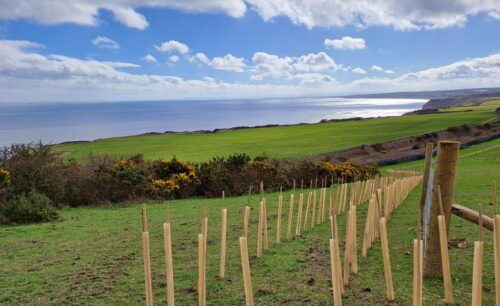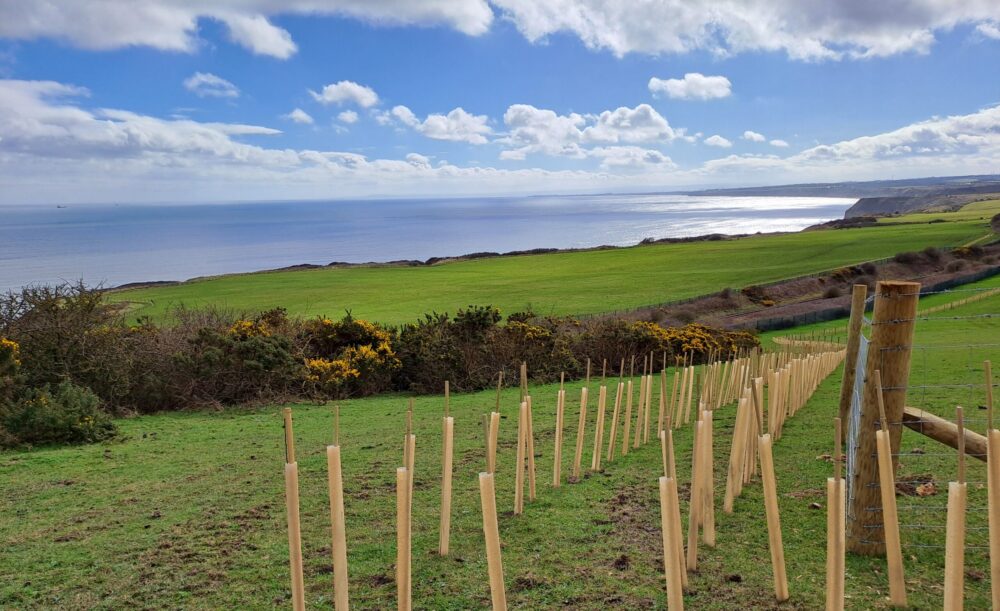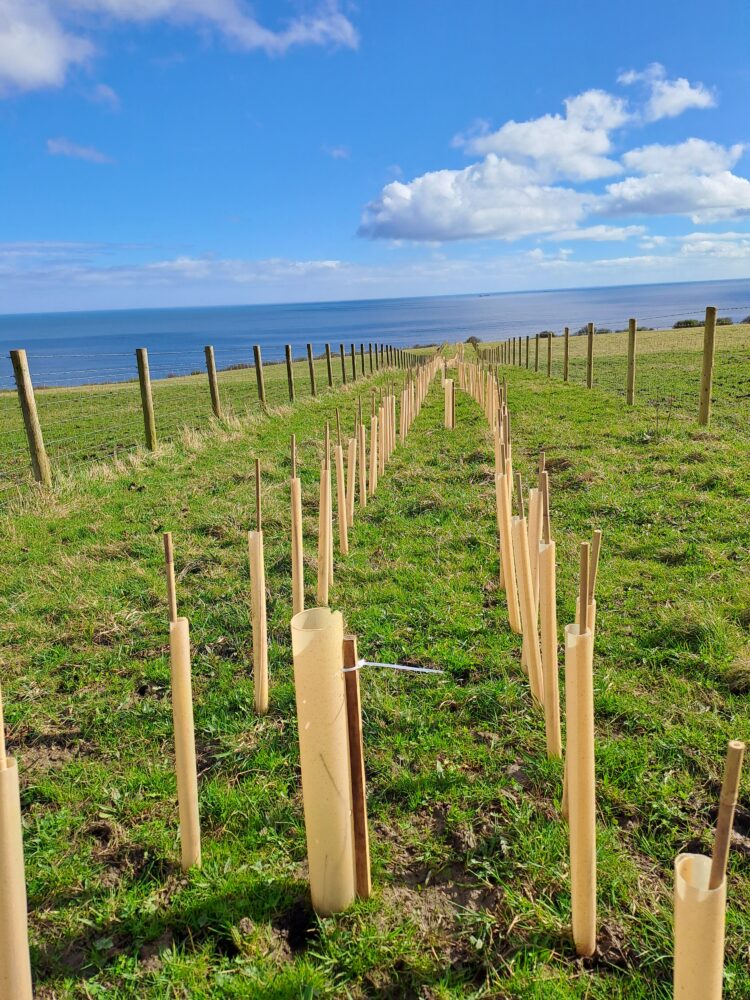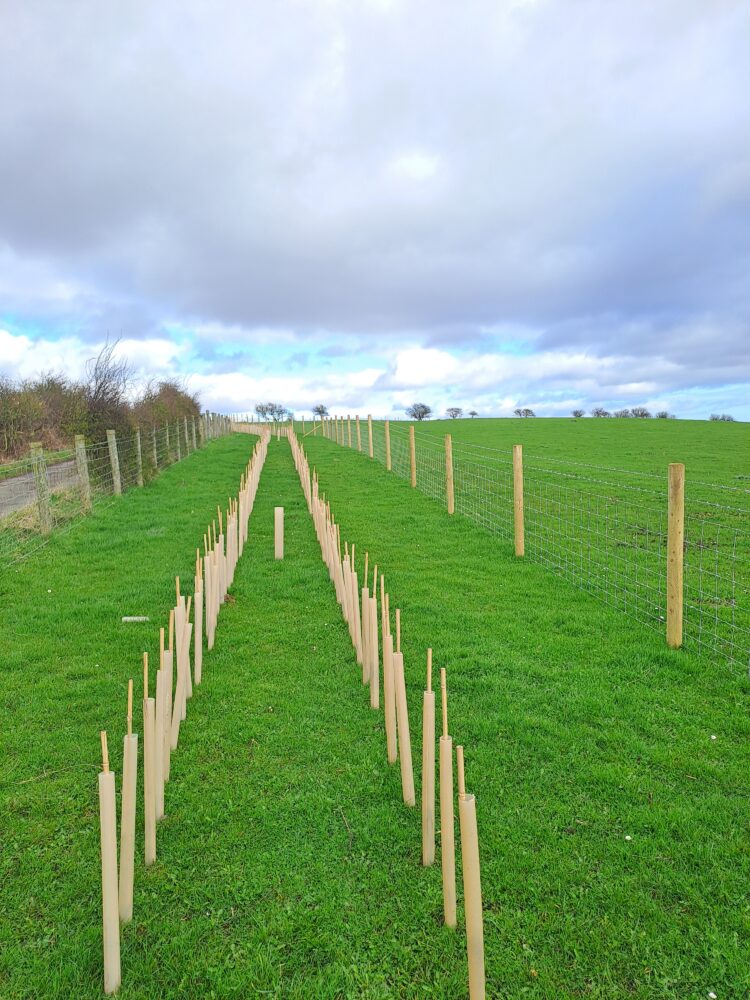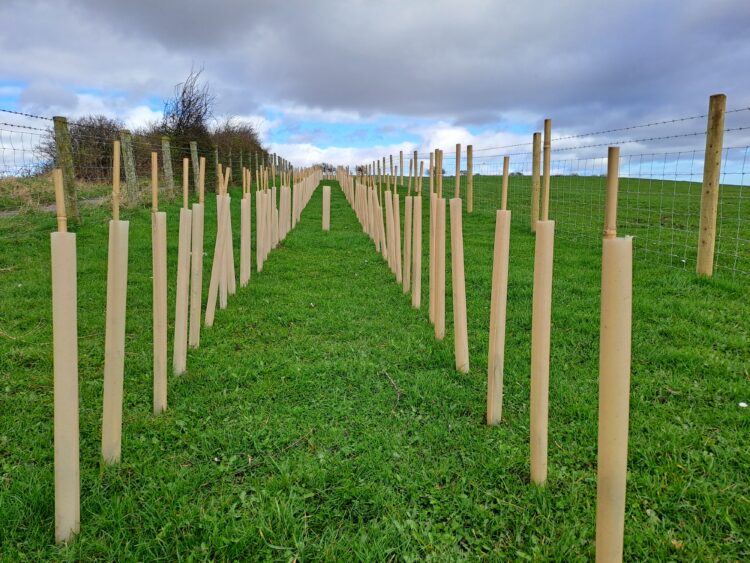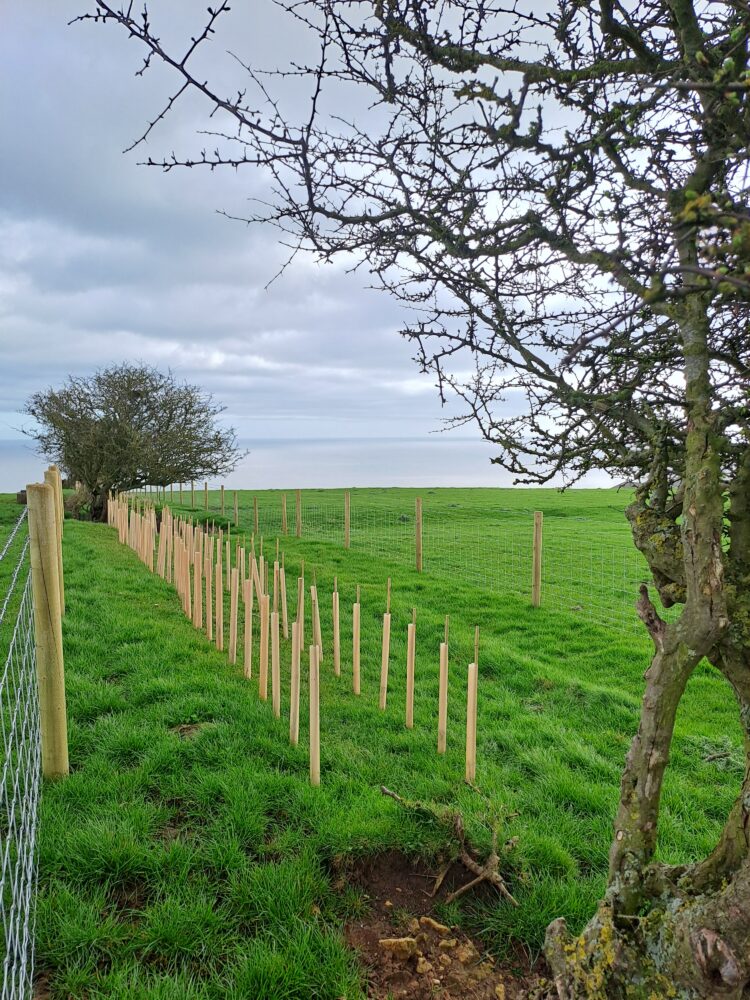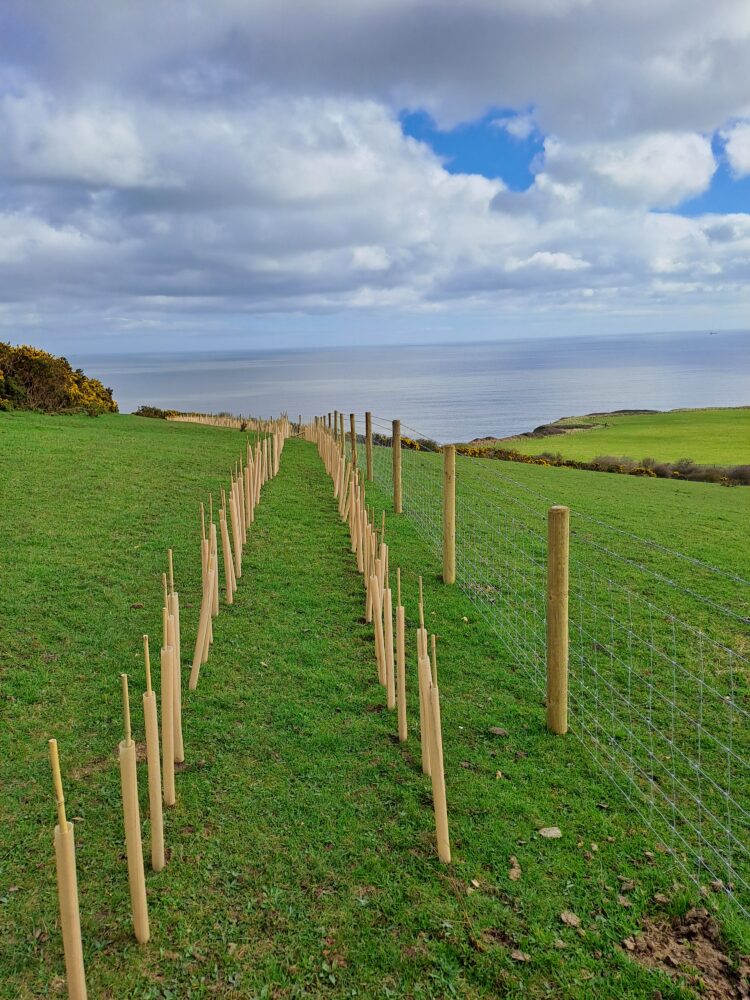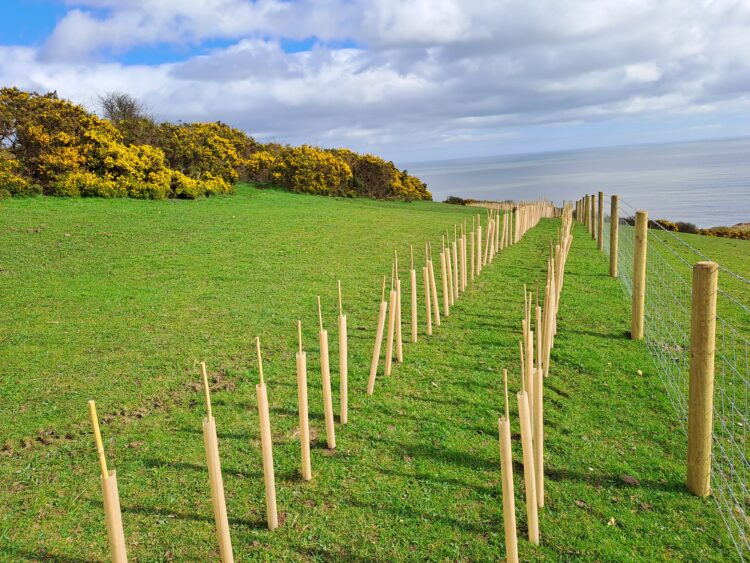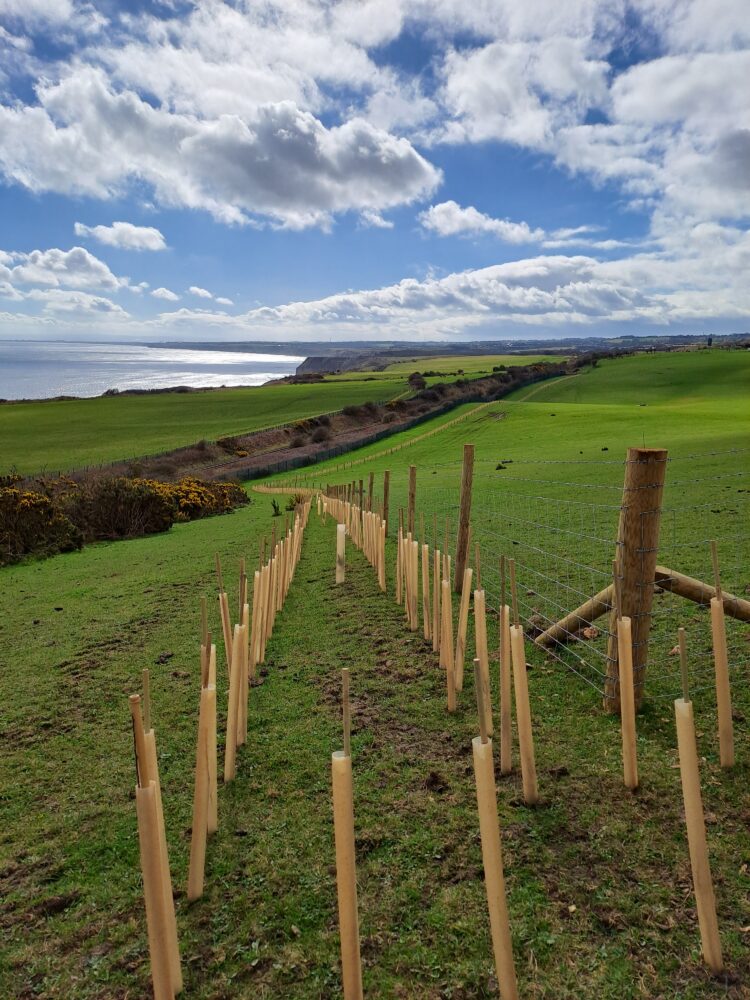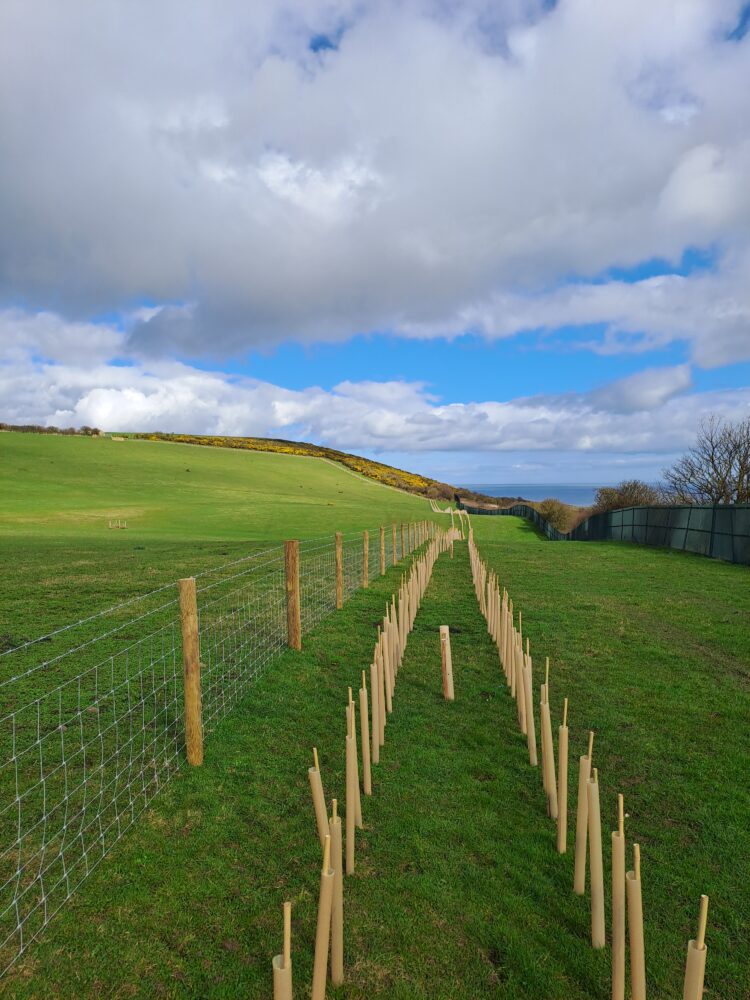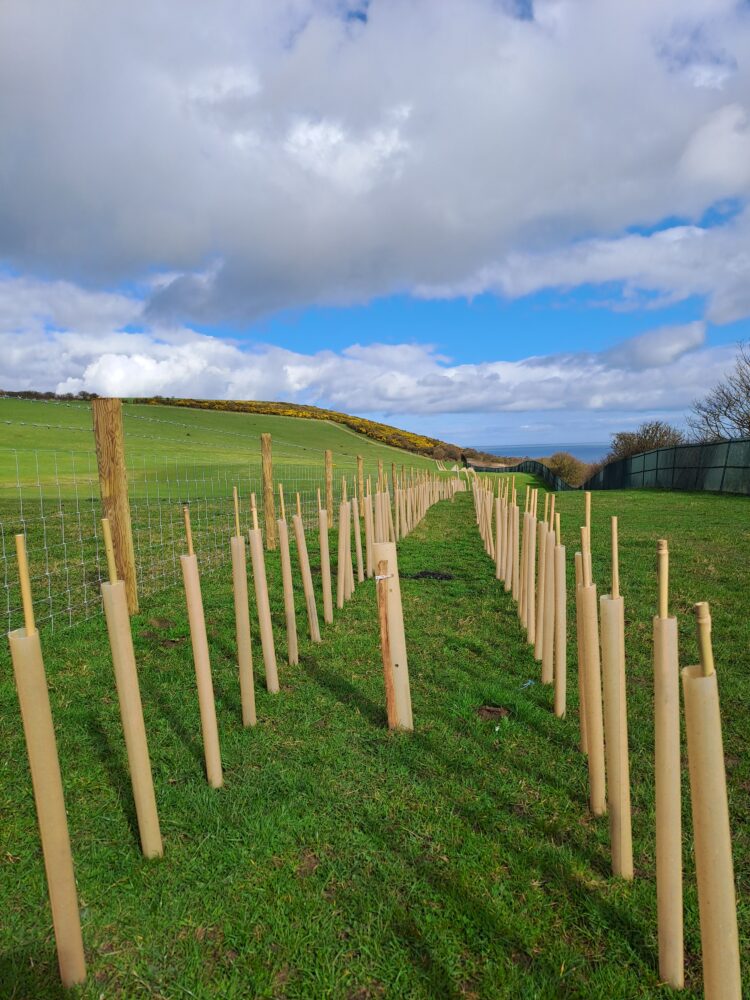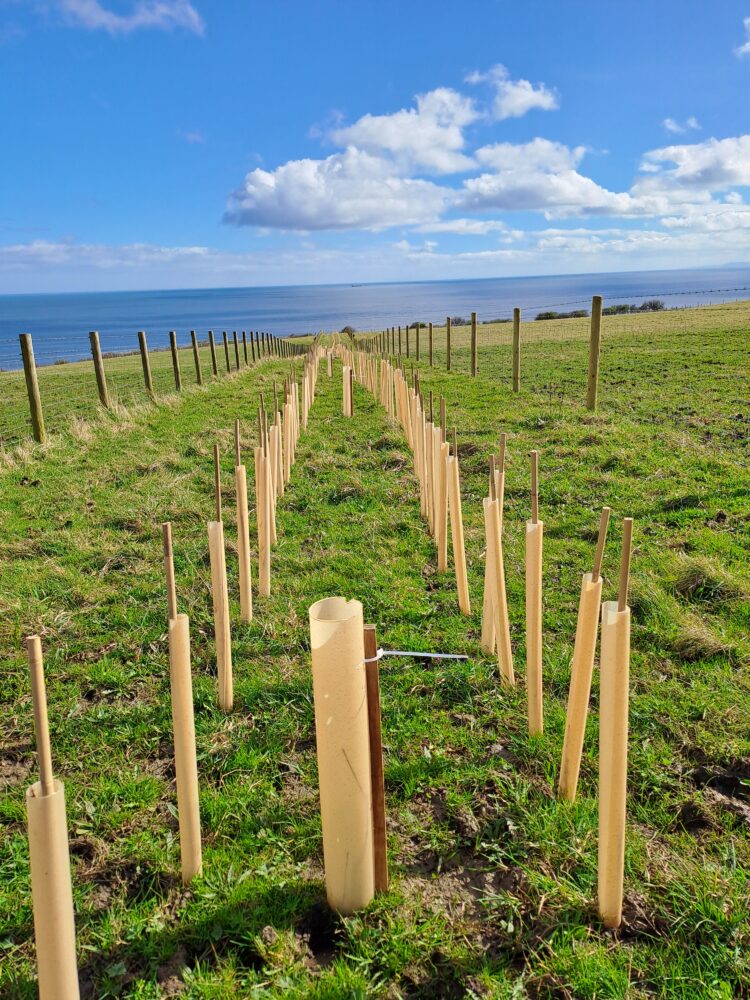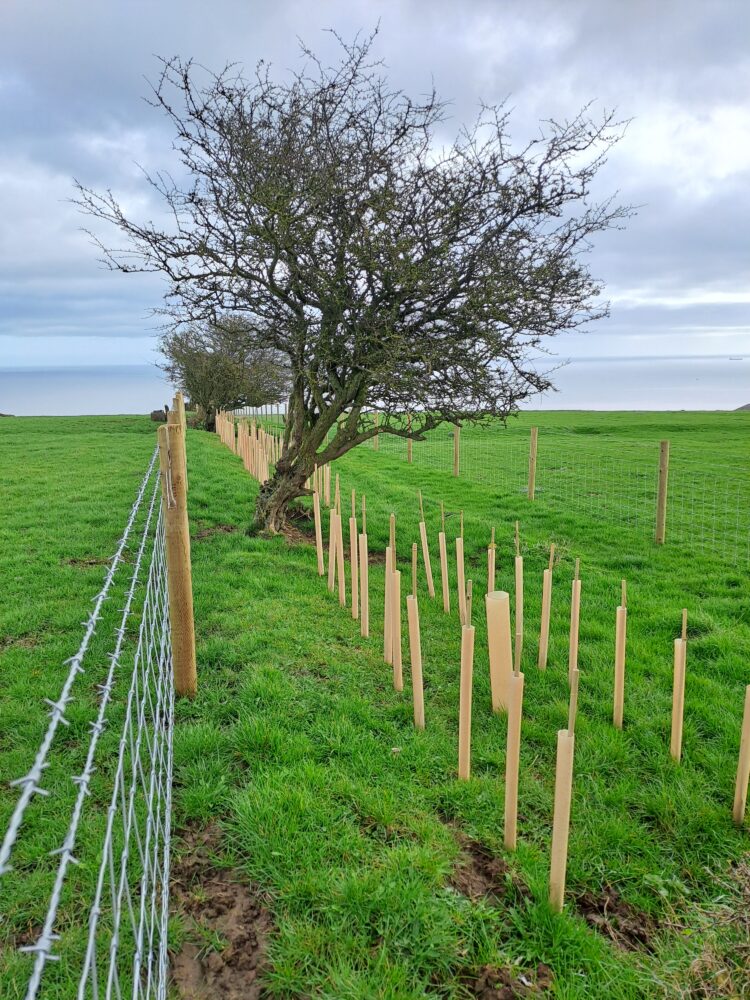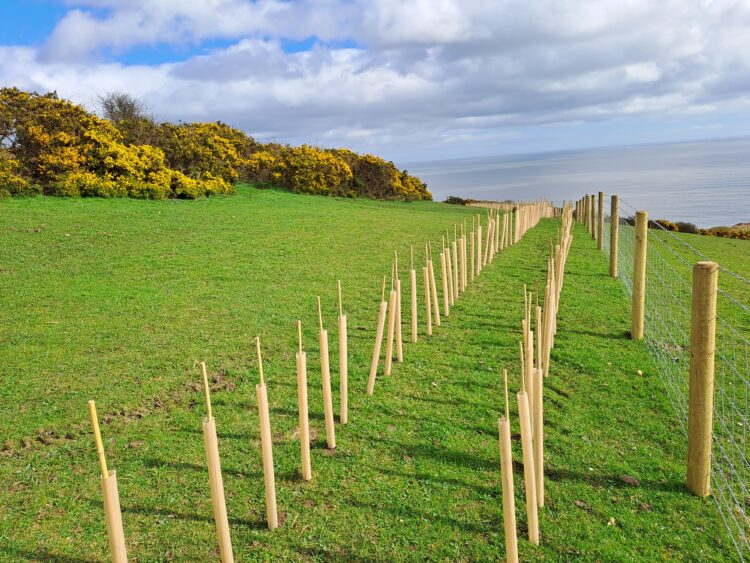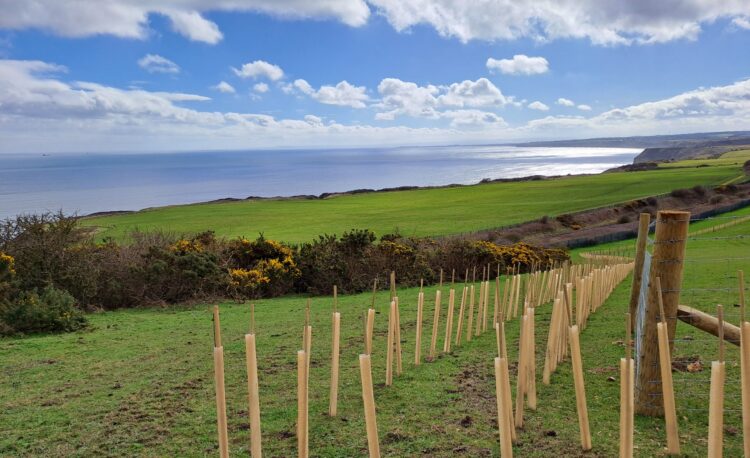Birds, bats, bees and butterflies will all benefit from more than five miles (8.2km) of new hedgerows close to the Durham Coast.
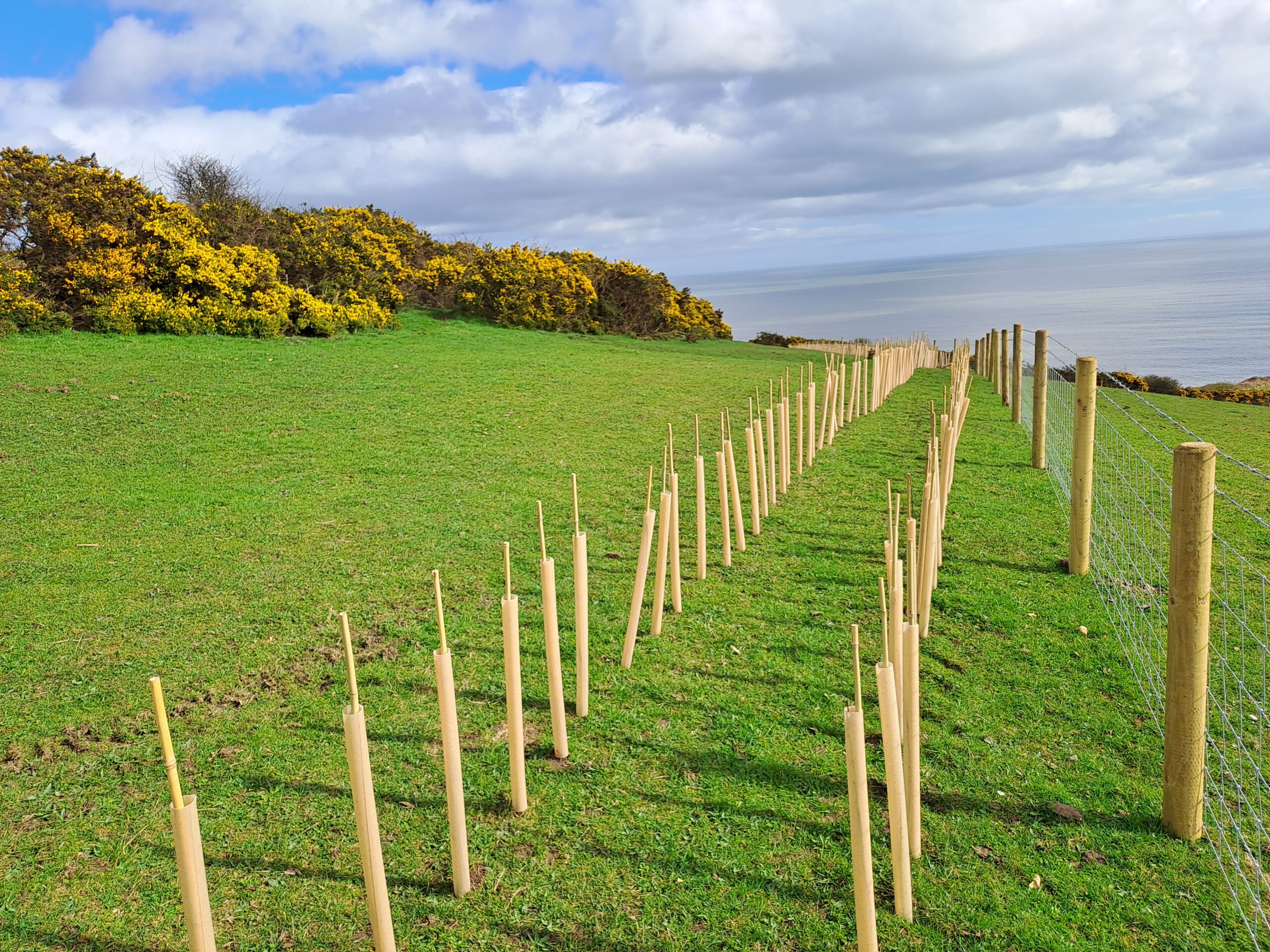
White Lea farm, County Durham Hedgerow planting
Hedgerows are an important but vanishing part of the British countryside. Across the country, around half our hedgerows have disappeared since the start of the 20th century, which results in fragmented, isolated patches of habitat and a loss of food and shelter for wildlife.
The hedgerows will:
- help to reduce climate change by removing and storing carbon dioxide from the atmosphere
- provide shelter for grazing livestock
- offer food and habitat for birds, invertebrates and small mammals
- create connecting routes or corridors between existing habits for wildlife to travel along.
They feature a diverse mix of native species of hedge whips (small plants) and woodland trees and shrubs, including hawthorn, blackthorn, hazel, crab apple, wild privet, birch and rowan. The planting also includes a series of small woodlands, comprising 225 trees, and 550 in-hedge trees, planted on average every 15 metres. This gives the tree species – which include English oak, field maple and Scots pine – plenty of room to flourish and grow to full maturity.
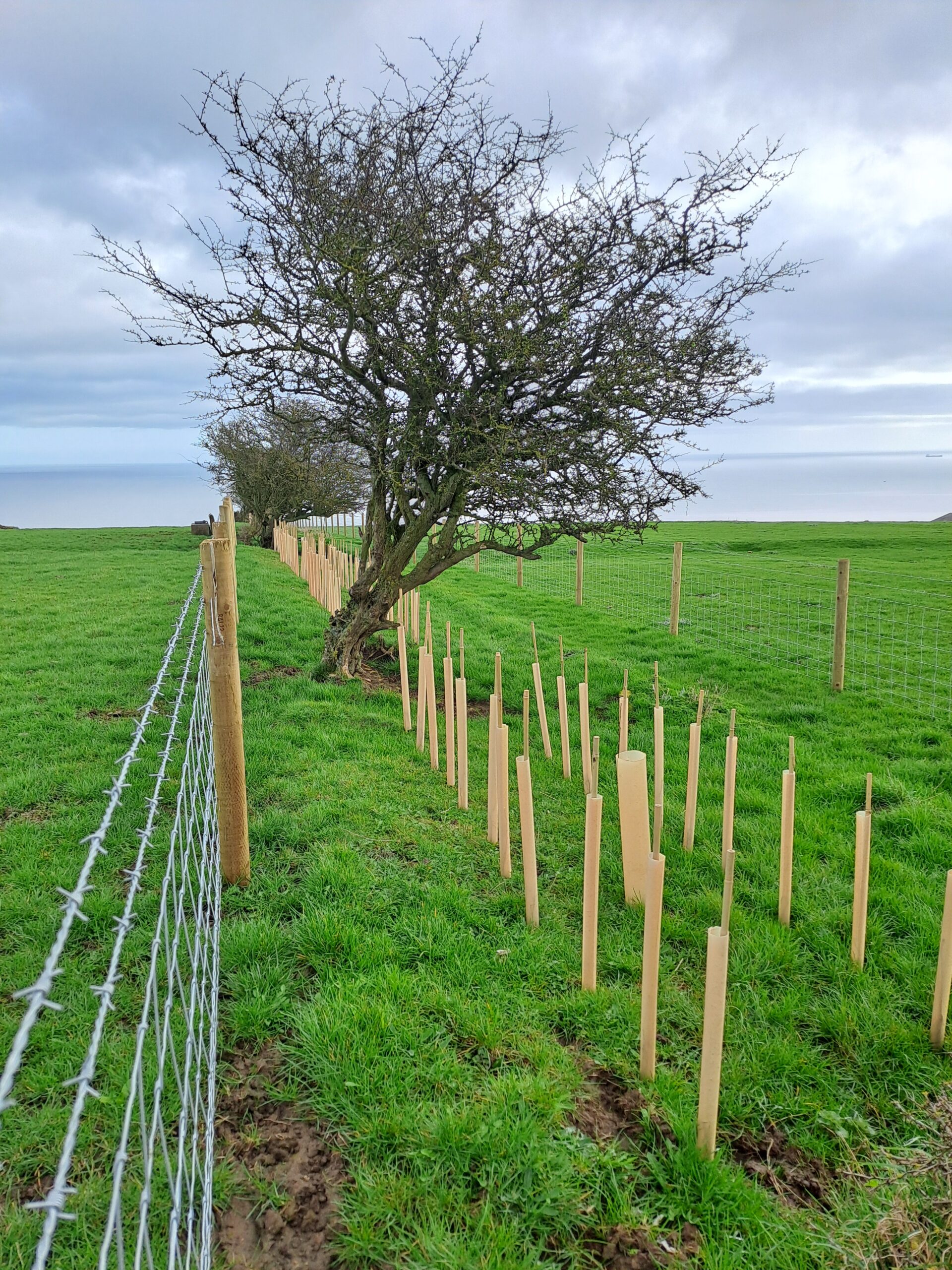
In hedge tree planting
Most of the hedges have been planted in five-metre-wide corridors and will initially be fenced off to prevent damage by grazing livestock. Where there’s space, some hedges have been planted directly alongside footpaths, but public access won’t be affected at all. The planting team is carefully preserving the open views that people love, maintaining key viewpoints on the farm and has avoided planting close to the cliff tops to allow the natural process of coastal erosion to continue.
Eric Wilton, General Manager, said:
“Hedgerows are hugely important, although often ignored – and this planting project is a vital, long-term part of our work to conserve and restore habitats along this special stretch of coastline.
“Hedgerows are amazing habitats in their own right and help to connect other habitats. The more diverse a hedgerow, the more life it can support, as different species flower and offer a food supply at different times of year. As the hedgerow matures, you’ll often get some dead wood and plant litter, which are great for insects, spiders and other invertebrates. In turn, they attract other creatures, such as bats, small mammals and birds.”
Lloyd Jones, Forest Manager – North East Community Forest, said:
“We have long-term ambitions to increase woodland, tree and hedgerow cover across the North East, which will bring huge environmental, health and economic benefits to the region. This latest partnership project between the North East Community Forest, National Trust and Tilhill Forestry project brings us a step closer to these goals. It has been a real team effort and we would like to thank all our partners for their support in making it happen.”
Supporting declining species
The National Trust hopes that planting hedgerows will support declining bird and butterfly species. The yellowhammer, a colourful farmland bird, relies on hedgerows for foraging and nesting. Its 62% decline since 1967 is thought to be due to changes in arable management and the removal of hedgerows. Song thrushes, which have declined by 49% since 1967, should benefit too.
Hedgerows are also important for butterflies, such as the brown hairstreak, which lays its eggs on blackthorn. Its population has declined as many hedges have been removed or flailed. Formerly widespread, it’s now generally only found in southern England and Wales, though data collected by the charity Butterfly Conservation since 2000 shows that the species seems to be slowly moving north.
Bats, including brown long-eared bats, will welcome the new hedges too. They’re known to avoid flying through open space to avoid predators, so can follow the hedgerows from their roost sites to a key foraging area. As the in-hedge trees mature and start to show natural signs of decay, they will provide further roosting places for bats.
Hedgerows are a helpful guiding feature for foraging bumble bees too, and the flowers sustain the bees’ populations from spring to early autumn. Late-summer and early-autumn flowers are essential for new queen bumbles, allowing them to build fat reserves before hibernation, as well as providing nesting and hibernation sites. When the queens emerge after hibernation, willow, cherry, hawthorn and blackthorn provide important food at a time when few other species have flowered.
Find out more about the Durham Coast at nationaltrust.org.uk/durham-coast
Read the White Lea Farm Case Study
Tilhill Forestry, were engaged to work with the National Trust to submit a grant application to plant over 40,000 mixed hedgerow trees and shrub species at White Lea Farm, Easington and Cotsford Fields in Horden, part of the National Trust’s Durham Coast & Countryside portfolio. The project saw the planting of over 8.2 kilometres of hedgerows to diversify the land for social and environmental benefit.
